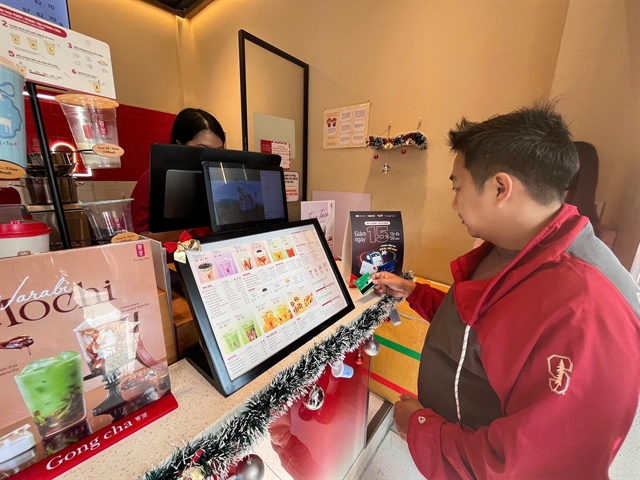 Economy
Economy

 |
| Container trucks cross the Kim Thành 2 international border gate in the northern province of Lào Cai. — VNA/VNS Photo Quốc Khánh |
HÀ NỘI — As soon as China reopened its border on January 8, business between Việt Nam and China became busy again after a nearly three-year disruption due to the COVID-19 pandemic.
Deputy head of the border station based at the Kim Thành International Bordergate in the northern province of Lào Cai Senior Lieutenant Hoàng Minh Du said that from January 8, the volume of goods traded via the border gate increased daily.
Particularly, on January 11, the border gate saw 71 trucks carrying goods for export and 158 trucks carrying imported goods.
Before the outbreak of the COVID-19 pandemic, about 200 trucks travelled through the border gate daily.
However, at the border gate, China still maintains the delivery of import and export goods by specialised drivers who can drive trucks through the border gate from China to Việt Nam and vice versa but the drivers are not required to wear protective clothes anymore, according to Du.
The goods-checking stage is also removed so the delivery of import and export goods between enterprises of the two countries is convenient and fast, he said.
In the border province of Lạng Sơn, parking areas at the Tân Thanh Border Gate and the Hữu Nghị International Border Gate are filled with trucks that carry products for export.
The truck drivers are no longer required to wear protective clothing and they can talk to each other when queuing for check-in procedures.
Nguyễn Thị Ngọc Nhung, a representative of the Hoa Cương Fruit Import-Export Co Ltd from the southern province of Long An, said that her company exports five to six containers of jackfruit and dragon fruit to China every day through border gates in Lạng Sơn.
Previously, once reaching the border gate, her trucks had to wait for at least a half day and drivers must open containers for authorities to check goods and take samples for COVID-19 testing.
Thus, her company had to spend an additional VNĐ2 - VNĐ4 million (US$85-170) for each truck at that time.
Since January 8, businesses have saved tens of millions of đồng every day when they no longer have to pay for disease prevention and control, Nhung told Thanh Niên (Young People) newspaper.
Huỳnh Tân Đạt, Deputy Director of the Plant Protection Department under the Ministry of Agriculture and Rural Development, said that China is the most important export market of Việt Nam's agricultural sector, including the fruit and vegetable industry.
Đạt said that if Việt Nam's agricultural products and fruits meet requirements on food safety, quality, and product design, the country has a great opportunity to export to China.
As Việt Nam and China share a long border with numerous border gates, Việt Nam has a competitive advantage in terms of price and transportation costs, Đạt said, adding that the export of Vietnamese agricultural products to China, particularly durian, banana, and sweet potato will grow strongly this year.
Deputy Minister of Agriculture and Rural Development Phùng Đức Tiến, Việt Nam's exports of agricultural goods and products to China account for about 19.2 per cent of the market share of goods and agricultural products imported to the country.
China's border reopening is a great opportunity for Vietnamese goods and agricultural products to penetrate deeply into that market, Tiến said. — VNS




